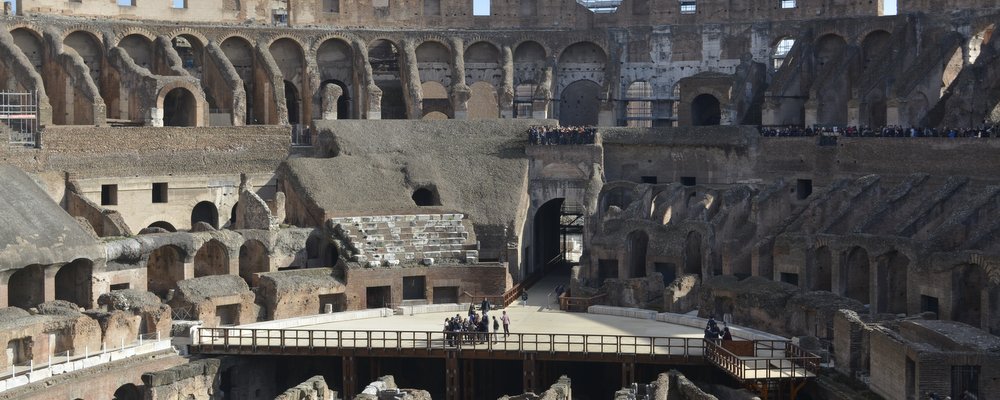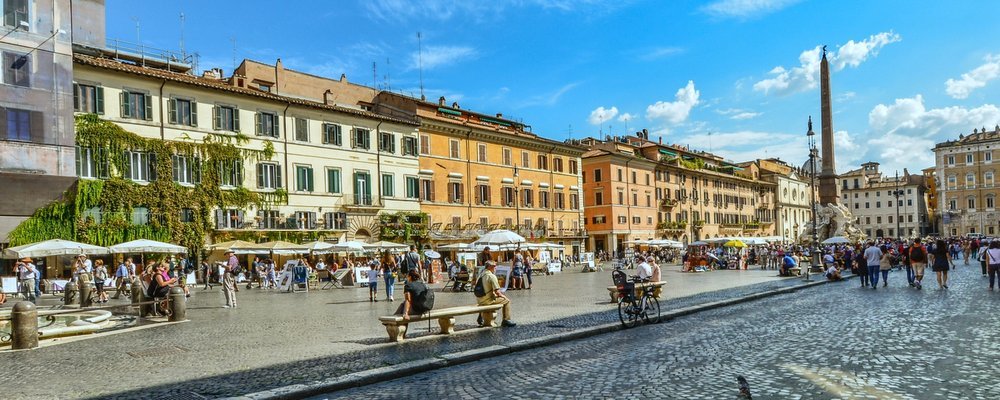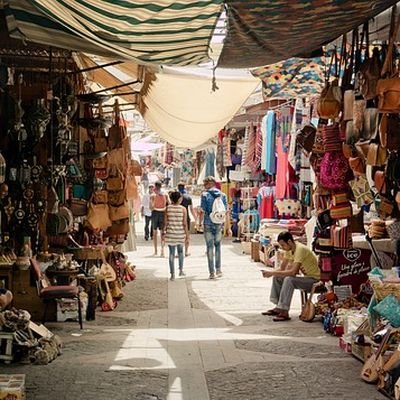Rome isn't an easy city for someone with mobility requirements to visit, but it's worth the effort. Ancient Rome has an abundance of cobbled streets, so prepare for a bumpy ride with beautiful sights everywhere you look.
Colosseum
The Colosseum is one of the greatest remnants of Ancient Rome. The size and detail of the monument combined with a little imagination will leave you in awe. You'd be forgiven for thinking that the Colosseum's access would be difficult for wheelchair users - but thankfully it has been completely modernised and has a smooth flat surface throughout, as well as a lift and accessible toilets.

Roman Forum
The Roman Forum was once the centre of Roman life, and it's amazing to see these buildings still standing (in one form or another) after so many years, it almost feels like you've gone back in time. There is a lift to take you down from street level, but the ground is so uneven that wheelchair users may struggle.
Pantheon
The Pantheon is said to be the best preserved of Rome's ancient monuments, and its dome is record-breaking. It's an amazing feeling to be inside a temple (now used as a church) which was built almost two thousand years ago. What happens when it rains? Look out for the drain holes in the marble floor. The Pantheon is completely wheelchair accessible, and entry is free.

Piazza Navona
Piazza Navona is the showcase of central Rome. A beautiful square with street artists, ornate fountains and pavement cafes, makes it perfect place the sit, watch the world go by and enjoy a gelato. Piazza Navona has a curb to get into middle of square, with a slight step up.
Campo de' Fiori
The colourful, loud, daily market at Campo de' Fiori is a part of Roman life. Smells of spices, herbs and cheese fill the air and vendors encourage visitors to try their produce. In the evening the square is transformed into a place to socialise, with lovely music, restaurants, and a mix of locals and tourists. The square is level, with no curbs. The ground is a cobbled surface, which is relatively smooth and pleasant for wheelchair users compared to some areas of Ancient Rome.

Vatican Museums
Visiting the Vatican Museums is an unforgettable experience. Here is one the world's greatest art collections in such a beautiful setting. Don't try to cover it all in one go - legend has it that viewing every exhibit could take 12 years! Be prepared for crowds which can make the experience stressful, but definitely worth it. Wheelchair users can go backwards along parts of the tour route and through roped off areas to avoid stairs.
Sistine Chapel
The Sistine Chapel is one of the most famous works of art on the planet, and is beautiful, awe-inspiring, and everything you would expect. However, though adaptations for access have been made, the accessible route to the Chapel goes against the flow of people, and the sheer numbers of people packed into one space make it an uncomfortable experience. Despite all of this, the Sistine Chapel is a must see for everyone visiting Rome. Vatican Museum staff will escort disabled visitors + 1 companion to the Sistine Chapel, as the accessible route is roped off.

St. Peter's Basilica
St. Peter's Basilica is Italy's largest church, and a symbol of Rome. Its sheer size and beauty is incredible, and it's filled with history. As you'd expect, the crowds are large, but a respectful quiet is (mostly) observed and it's possible to find peaceful corners to take in the opulent interior. There are accessible toilet facilities. Admission to the church is free for all, and disabled visitors are entitled to skip the queues. The accessible entrance is in St. Peter's Square, to the right of the Basilica's facade. This entrance has a lift that takes your from Square level to Portico level.
Here are some additional Tips On How To Get The Most Out Of Your Accessible Travel.
Carrie-Ann Lightley is a traveller, a blogger and an inspiration for the less mobile traveller. She doesn’t let her Cerebral Palsy slow her down from enjoying the world, near and far. Living with the mantra of ‘there is always a way’ her travel blog provides expertise and inspiration for accessible travel. Visit Carrie-Ann at https://www.carrieannlightley.com















